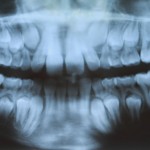
The upper permanent canines usually erupt between the ages of 11 -12. Between 1-3% of of canines are displaced, more commonly palatally. The cause is considered to be multifactorial and the complications can include root resorption of adjacent teeth or rarely cystic change. Management often involved surgical exposure and orthodontic alignment. Open and closed surgical approaches are employed with on average a 2-3 year time period being required to move the tooth into the correct position.
The aim of this Cochrane review was to assess the effectiveness of open or closed surgical methods of exposing palatally displaced canines (PDCs).
Methods
Searches were conducted in the Cochrane Oral Health’s Trials Register, the Cochrane Central Register of Controlled Trials (CENTRAL), Medline, Embase, the US National Institutes of Health Ongoing Trials Register (ClinicalTrials.gov) and the World Health Organization International Clinical Trials Registry Platform databases with no date or language restrictions.
Randomised and quasi-randomised controlled trials comparing surgical treatment to correct upper PDCs in young people were considered. Two reviewers independently selected studies, extracted data and assessed the risk of bias using the Cochrane tool. Data synthesis followed Cochrane methodological guidelines.
Results
- 3 studies involving 146 patients were included.
- 2 studies were considered to be at high risk of bias.
- The two techniques may be equally successful at exposing PDCs risk ratio = 0.99 (95%CI; 0.93 to 1.06); three studies, 141 participants analysed, low-quality evidence).
- One surgical failure was due to detachment of the gold chain (closed group).
- One study reported on complications following surgery and found two in the closed group: a post-operative infection requiring antibiotics and pain during alignment of the canine as the gold chain penetrated through the gum tissue of the palate.
- Data on dental aesthetics, patient-reported pain and discomfort, periodontal health and treatment time could not be pooled.
- Individual studies did not find any differences between the surgical techniques (low- to very low-quality evidence).
Conclusions
The authors concluded: –
Currently, the evidence suggests that neither the open or closed surgical technique for exposing palatally displaced maxillary canine teeth is superior for any of the outcomes included in this review; however, we considered the evidence to be low quality, with two of the three included studies being at high risk of bias. This suggests the need for more high-quality studies. Three ongoing clinical trials have been identified and it is hoped that these will produce data that can be pooled to increase the degree of certainty in these findings.
Comments
This Cochrane review updates the 2008 version of this topic. Since then 3 studies have been published, one of which we have previously covered in a blog (Dental Elf – 26th Jun 2012). This study was the only one of the 3 not considered to be at high risk of bias as it was randomised rather than quasi-randomised. While surgical exposure appears to successful overall (4 failure out of 69 in the open groups and 2 out of 71 in the closed groups and the evidence suggests no difference between the two approaches the quality of the evidence is low. As the authors note further evidence from high- quality randomised controlled trials is needed and they highlight 3 trials currently underway which will hopefully add to the knowledge on this topic.
Links
Primary paper
Parkin N, Benson PE, Thind B, Shah A, Khalil I, Ghafoor S. Open versus closed surgical exposure of canine teeth that are displaced in the roof of the mouth. Cochrane Database of Systematic Reviews 2017, Issue 8. Art. No.: CD006966. DOI: 10.1002/14651858.CD006966.pub3.
Other references
Cochrane OHG Blog – No RCT evidence to determine best technique for exposing displaced eye teeth
Dental Elf – 26th Jun 2012
Dental Elf – 8th Aug 2013

[…] post Palatally displaced canines: open or closed surgical exposure? appeared first on […]